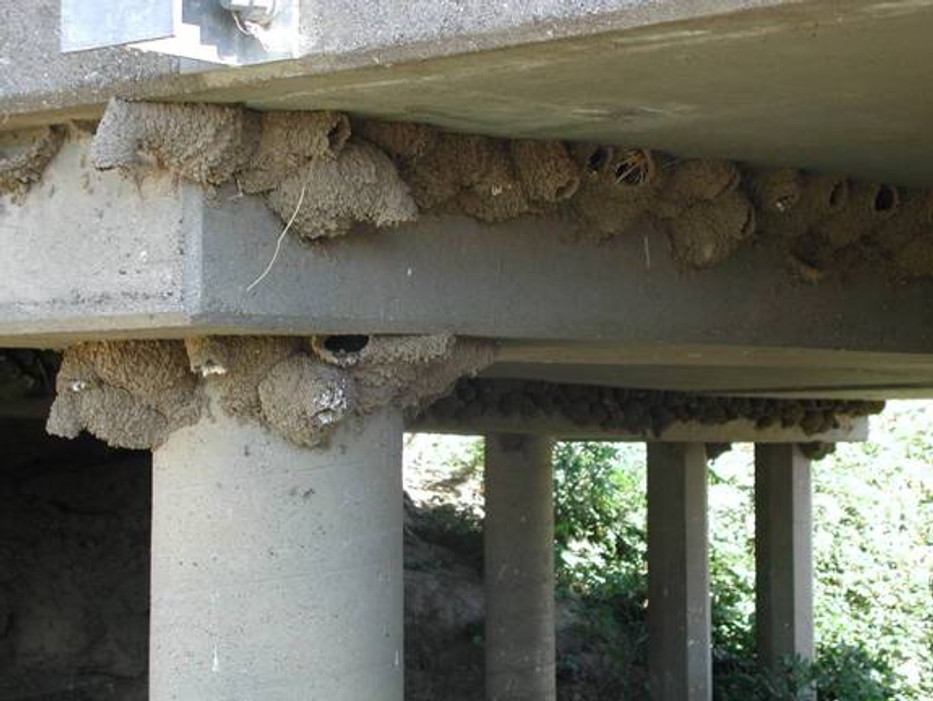Effective Bird Control Methods to Exclude Swallows from Nesting on Highway Structures
The swallow is a colonially breeding migratory bird that often nests on highway structures. Swallows are one of the birds protected by the Migratory Bird Treaty Act of 1918 which protects them from harm when there are active nests. Often times this can cause delays for structures and maintenance divisions of many departments of transportation. In Clive, Iowa, the nests are active, and if there are any issues on the structures it will have to wait. The babies are still in the nests and very active. The area needs to be monitored, and as soon as the nests have been vacated, they need to be taken down and bird control methods need to be put in place. Often times, other birds will come and take over the nests, and they, too, could be protected under the Migratory Bird Treaty Act. Swallows will often try to return each year to the same location, so when bird control methods are in place after they leave; they will not be able to return and will be forced to find another location.
Bird Netting for Total Exclusion
Exclusion of the swallow is the best way to deter their nest building. Exclusion means any control method that denies the swallow physical access to a nesting spot. Exclusion is a relatively permanent and long-term solution to the problem. Bird netting provides a physical barrier between the swallow and the nesting sites under the highway structures. The netting can be attached using special clips or zip ties, tape or Velcro. The netting needs to extend from the outer edge of the eave down to the sides of the structure. This will stop the area from being a protection from the elements for the swallows.
Similar to netting is applying clear mono-filament sections attached under the eaves. The lines are spaced a few inches apart in a parallel or zigzag pattern. Each section is 3 by 11 long and the strips have adhesive backing for easy attachment. There are also pre-drilled holes for nailing the sections in. When installed correctly, both the netting and clear mono-filament sections are virtually invisible from the ground. The swallows will know they are there, which is the important thing, however they will fly on by to find a more comfortable and welcoming location to start building their nasty mud nests.
The reason to implement the two bird control methods is because the nests often live in close association with humans. In many situations they become a real nuisance because of the droppings they deposit. Besides the aesthetic problems they create, they can foul up machinery and cause health hazards by contaminating water and other areas. Their mud nests eventually fall to the ground causing similar problems. Parasites, fleas, ticks and mites all are found in swallow nests and can affect humans and domestic animals.
There are other bird control products such as sound deterrents that broadcast predator and distress calls. These are effective as well, but cannot guarantee total exclusion like a physical bird deterrent such as bird netting.

